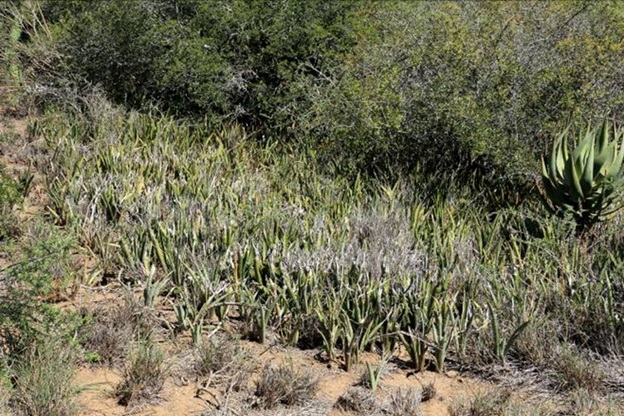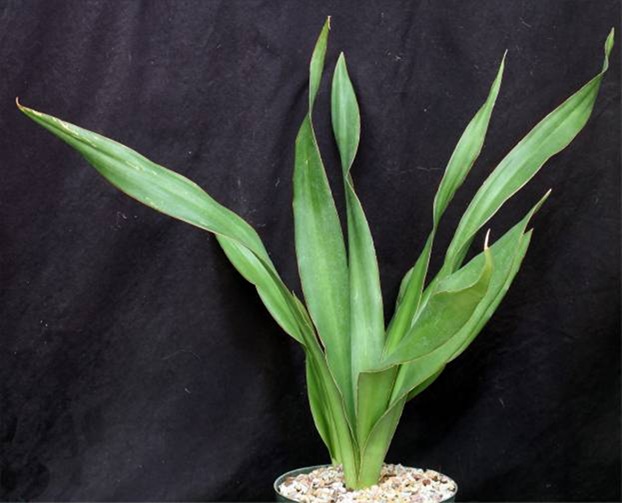| Protologue: |
Demonstrationes de Plantarum in Horto Upsaliensi, 10. (1753). |
| New Combination: |
The Botanical Exchange Club & Society of the British Isles, Report for 1913, 3(5): 423 (1914). |
| Etymology: |
The epithet refers to its resemblance to members of the genus Hyacinthus. |
| Subgenus: |
Sansevieria |
| Group: |
Sansevieria hyacinthoides |
| Distribution: |
This species is widely distributed but is most common in southern Africa, including South Africa, Namibia, Botswana, Zimbabwe, and Mozambique. |
| Brief Description: |
This archetypal broad-leaf species is acaulescent and rhizomatous, and it has 2 - 8 smooth, flexible, and rosulate leaves that are erect and lanceolate to broadly linear. The leaves are 15060 cm long and 2.5 - 9 cm wide, narrowed from the middle or below downwards to a channelled petiole. The leaves are dull-to-dark green with or without numerous closely placed light green bands that fade with age. The leaves have a white withered tip and a brownish-red margin. The inflorescence is 45-75 cm tall and simple with 2 - 6 flowers per cluster. |
| Similar Species: |
As this was the first Sansevieria described to science, as Aloe hyacinthoides by Linné in 1753, it houses a number of "species" still in cultivation with dubious taxonomy, including but not limited to Sansevieria thrysiflora and Sansevieria guineensis. A number of currently recognized species have been lumped into here as well, including Sansevieria grandis subsp. zuluensis. As a result, this is a taxonomic nightmare for plant collectors that makes Sansevieria hyacinthoides difficult to distinguish from other species and some hybrids. |
| |
| |

A large stand of Sansevieria hyacinthoides near the type locality of Uitenhage, South Africa.
|
| |

Sansevieria hyacinthoides, propagated from plants originally collected near Shamva, Zimbabwe.
|
| |

Sansevieria hyacinthoides in cultivation, the form of the former Sansevieria thrysiflora.
|
| |

Sansevieria hyacinthoides, formerly known as Sansevieria grandis subsp. zuluensis from Kwa-Zulu Natal, South Africa.
|

